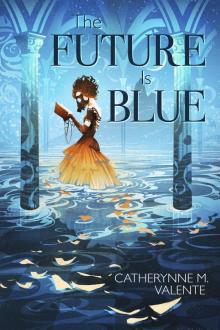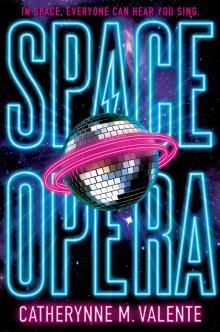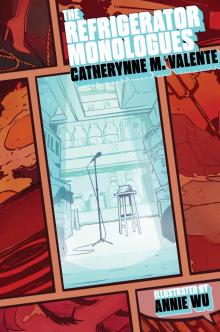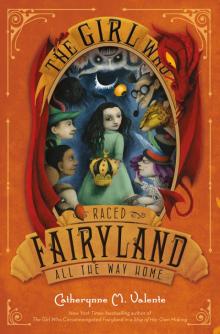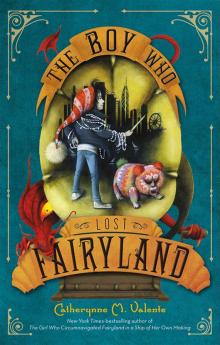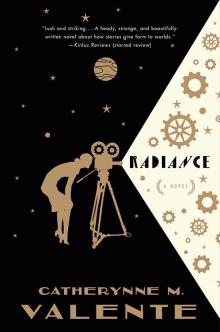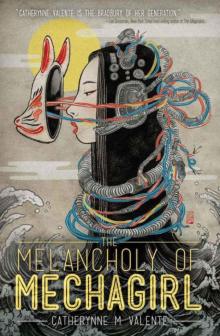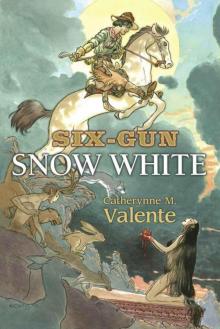


May the Farce Be With You, Page 2
Roger Foss
Sometimes, when I go to the Trafalgar Studios, the former Whitehall, I fancy I can still hear echoes of forgotten laughter. Who were these men and women wearing grey flannel suits, home-knitted cardigans and NHS glasses? I like to think of them as my kind of people, my parents’ and grandparents’ generation, the often bad-mouthed coach party trade who would rather see broad farces and big-name revues starring the Crazy Gang than the voguish dramas of Christopher Fry, T.S. Eliot and Jean Anouilh playing at that time – or anything by Samuel Beckett. These folk wanted to get as far away from John Osborne’s kitchen sink as possible.
When Reluctant Heroes opened on 12 September 1950 farce was a major force for fun in London’s Theatreland – a shining example of escapist entertainment after six bleak years of war and another six grey years of austerity. At the Whitehall, laughs weren’t on ration. They were providing an antidote to austerity. Rix and company had tuned in to a commonly shared peacetime mood of optimism. Audience, actors and writers were all facing the same way. They had all lived through the war against Hitler. Virtually every family in the country contained someone who was now a rookie National Service sailor, soldier or airman. When the Korean War broke out a few months earlier in June 1950, almost one hundred thousand British servicemen and women were sent to East Asia.
No wonder that the hearty laughter of Reluctant Heroes burst a hell of a lot of belly buttons: the barrack-room humour and authentic service lingo of grumbling soldiers chimed with the times. ‘It can be recommended with the utmost confidence as one of the most effectivetonics now available against depression caused by conflict abroad and strikes and high taxation at home’ observed an unnamed Morning Advertiser critic. In its own way, Reluctant Heroes was as topical and as relevant as Osborne’s Look Back in Anger six years later.
Elsewhere in London’s not-so-glittering West End of 1950, farce was staple fare, rather like musicals are today. At the Strand Theatre, veteran farceurs Robertson Hare and Arthur Riscoe were renewing their 1948 stage partnership in Vernon Sylvaine’s hilarious comedy Will Any Gentleman?, about a meek and mild chap given a split personality by a music hall hypnotist. Traveller’s Joy, a farcical door-slamming romp by actor-playwright Arthur Macrae involving an unpaid hotel bill, a divorced couple and an illicit liaison, was doing a roaring trade at the Criterion. The Dish Ran Away… by Graham Fraser became a hit at the Vaudeville Theatre, after transferring from the Whitehall to make way for Reluctant Heroes. Arthur Wing Pinero’s 1911 farce about religious hypocrisy, Preserving Mr Panmure, was successfully revived at the Arts Theatre before rapidly switching to the Aldwych Theatre.
The seemingly unstoppable run of Reluctant Heroes ended on 24 July 1954 (around about the same time that RADA graduates Joe Orton and his partner Kenneth Halliwell were fancying themselves as budding novelists), but it continued to attract audiences with a UK tour, a film adaptation, and countless subsequent revivals by the network of rep companies up and down the country.
There should be a plaque outside the Whitehall Theatre. For sixteen years under Rix’s reign the Whitehall was a national house of hilarity, breaking the Aldwych Theatre team’s previous record of ten-and-a-half years of consecutive farces written by Ben Travers. Described by Harold Hobson in The Times as ‘The greatest master of farce in my theatre-going lifetime’, Rix followed his first Whitehall comedy hit with a succession of original crowd-pulling Whitehall farces: Dry Rot by John Chapman; One for the Pot by Ray Cooney and Tony Hilton; Simple Spymen by John Chapman; Chase Me, Comrade! by Ray Cooney. Then he took over the Garrick Theatre on and off for nine years and did the same with The Brian Rix Theatre of Laughter.
Forward-looking and fresh, Rix was, I believe, the greatest populariser of farce in the twentieth century. In a shrewd move, he persuaded BBC television to transmit the first act of Reluctant Heroes from the Whitehall in May 1952. The result was ‘staggering’, he recalled in a Guardian article published in 2008. ‘Even though the play was in its third year there were queues at the box office for months and the BBC’s own viewer research reported that the transmission received the “phenomenal [appreciation] figure of 90 out of 100” and that “there is little to report save tremendous, unqualified enthusiasm”. West End managers now fell over themselves trying to get excerpts on the BBC, while a viewer wrote: “I didn’t know you could laugh in the theatre. I thought it was like going to church”.’
Five months later Rix presented the first full-length farce live from the Whitehall Theatre – Philip King’s Postman’s Knock. It was such a success that the BBC invited him to produce five more farces each year. There were more than 80 live transmissions in the ‘Brian Rix Presents’ series; the first was Love in a Mist by Kenneth Horne in January 1956; the last was What the Doctor Ordered by Lawrence Huntingdon and Vernon Sylvaine, broadcast on Whit Monday 1972.
Another early Sixties BBC television series of specially written 50-minute farces called Dial Rix attracted huge audiences of up to 21 million, with titles such as Come Prancing, Between the Balance Sheets and What a Drag by comedy writers such as Ray Cooney, John Chapman, Kenneth Horne, Tony Hilton and Christopher Bond.
As the star actor in the Whitehall and Garrick farces, Rix’s characters invariably became embroiled in absurd, seemingly inescapable situations and were always caught at some hysterical highpoint in the play dropping their trousers to reveal baggy boxers and a pale pair of legs wrapped in sock suspenders. But it is slovenly theatre history to replicate the idea that Rix was simply a serial trouser-dropper – that the farces he produced and appeared in provided unsophisticated fun while it lasted but ought not now to be taken seriously as comedic theatre.
The mostly youthful Whitehall team aimed to show ordinary post-war working class and middle class audiences a reflection of themselves. Pinero’s intellectually respectable turn-of-the-century farces were passé. The silly-ass Travers farces of the Aldwych era had passed their laugh-by date.
Set in the lounge of a Fawlty Towers-esque country hotel John Chapman’s Dry Rot (1954) was a five-star classic, playing for three and a half years at the Whitehall. The plot spins around a pair of flashy loud-suited bookies and their dim-witted sidekick who become embroiled in a horse-nobbling swindle. The comedy chimed with a time when bookie’s runners and widely flouted laws against off-course betting were part of the racing scene. Secret rooms, sliding panels and mistaken identities abound in a comic canter that was voted in a 2002 National Theatre poll as one of the 100 best plays of the twentieth century.
Chapman, who went on to write TV sitcoms such as Fresh Fields and The Liver Birds (with Carla Lane), and the prolific writer-director-producer and all-round farceur Ray Cooney, are shining examples of how fresh new contemporary British farce could capture the affection of the theatregoing public. Yet too often popular stage comedy of this era is either pooh-poohd or completely overlooked.
Rix and his team not only attracted audiences year after year, but also ushered in a flourishing golden age of inventive British farce that linked to the farce conventions of the past but also connected to music hall, variety, The Goon Show and ITMA, climaxing at one glorious moment in 1983, when Michael Frayn’s send-up of the genre, Noises Off, and Cooney’s ultimate tour-de-farce, Run For Your Wife, both began long runs in the West End.
If I wind back to my own theatre-going experience of the Sixties, Seventies and Eighties it’s the farces that keep grinning back at me. Naturally, as a boy actor and a drama student, I queued up for the new National Theatre and became infected by the buzz of the Royal Court (where I appeared in Peter Gill’s 1967 production of The Soldier’s Fortune with Sheila Hancock and Arthur Lowe). You got caught up in the excitement of Royal Shakespeare Company seasons, and the buzz of Joan Littlewood at Stratford East. Rock musicals, like Hair and Godspell, and the Anthony Newley Stop the World – I Want to Get Off phenomenon, were also must-sees.
But while my fellow acting students were enthusing over Peter Brook’s Marat/Sade or pondering over the meaning of ‘Pinter-esque’, I was the one w
ith a secret passion for the popular laugh-out-loud Britcoms running in the West End and on tour, the farces that literally ran and ran, like Cooney’s brilliantly constructed Chase Me, Comrade!, inspired by Rudolf Nureyev’s defection to the West. I can still remember laughing helplessly at the surreal visual buffoonery of this piece, especially Brian Rix’s eternal victim character morphing through a series of increasingly desperate disguises, including a naval officer, a leaping ballet dancer, a character who stretches to become a ten-foot giant, and a surreal talking tiger-skin rug.
The fake tiger sequence provided one of the most sublimely funny moments I have ever experienced in a theatre, one that also registered at the time with New Statesman theatre critic, Ronald Bryden: ‘As the animated pelt, a bellowing officer at its heels, scrambles off-stage in a whirlwind of slamming doors, the piece achieves that moment for which the cast, with fingers crossed, nightly hold back: the “take-off”, the hysterical consummation when the actors and audience, throwing off restraint and calculation, mutually surrender to the mingled idiocy and ingenuity which is the specific pleasure of farce.’
Once, after an intense morning’s rehearsal of The Soldier’s Fortune at the Royal Court, I sloped off to Shaftesbury Avenue to recharge my humour batteries at a matinee of Terence Frisby’s There’s a Girl in My Soup, by then in its third year in the West End. Maybe it was a yearning for more of that ‘mingled idiocy and ingenuity’ that drew me there, even it felt like I was embarking on secret laughter-smuggling mission across the Berlin Wall. Coach party farces and anything by Terence Rattigan were just not sexy enough for Sixties swingers. I mean, who in their right mind would plump for the innocent innuendo of No Sex Please, We’re British, Alistair Foot and Anthony Marriott’s hilarious long-runner of the bedroom variety, about a newly-wed couple ordering Scandinavian pornography by mistake, when you could snigger with the in-crowd at the fleshed-out single entendres of Oh! Calcutta!
No Sex Please, We’re British played in the West End for fourteen years. Chase Me, Comrade! ran from 15 July 1964 to 21 May 1966 and was the last of the Whitehall farces. Rix then attempted to run a repertoire of comedies and farces at the Garrick Theatre with members of the old Whitehall team, including ace farce director Wallace Douglas, and featuring comedians such as Leslie Crowther and Dickie Henderson.
The concept floundered financially, so Rix reverted to the tried and tested Whitehall format of presenting (and starring in) single plays for long runs, a strategy that produced some truly fine British farces. Three of them, written by Michael Pertwee – She’s Done It Again (1969), Don’t Just Lie There, Say Something (1971), and A Bit Between the Teeth (1984) – are funny, clever and inventive plays that easily measure up to anything in the Whitehall output. Yet in decades of theatre-going, I have yet to see any of these plays, or indeed any of the Whitehall farces, given the full professional West End or National Theatre treatment they deserve.
Travers’ Rookery Nook and Thark, King’s See How They Run, Frayn’s Noises Off and the some of the well-known Pinero titles are often revived, along with that transgendered dowager from Brazil, Charley’s Aunt, giving new audiences the chance to glimpse what British farce can do. But why has a work of theatrical genius like One for the Pot been ignored? Why overlook an anarchic gem like Pertwee’s She’s Done It Again? These plays, and many other still playable farces from the post-war era, have fallen out of favour. Yet, at the time, Harold Hobson described She’s Done It Again as ‘the funniest in which Brian Rix has ever appeared’ and praised its ‘delicious and delirious’ qualities: ‘What looks feeble and hackneyed on the page glows with glorious life in the Garrick Theatre.’
Involving an accident-prone parson, the Reverend Hubert Porter, who becomes embroiled in an increasingly bizarre world of sexual outrageousness and infidelity that leads to a succession of dotty deceptions and mad masquerades, Pertwee pushes a string of Establishment figures to the very brink of moral disaster, at times even echoing Orton’s rather more self-consciously outrageous comic salvos against prevailing moral codes in Loot and What the Butler Saw.
‘The libidinous, nervous tax inspector; the Reverend Hubert Porter, terrified of being discovered in his contribution to the great quintuplets deception; the crooked hotel proprietor, nervous, too, because all his machinations go wrong; the dotty old professor Hogg delivering babies by grace and by God – all these characters, and more, in She’s Done It Again, were threatened by the ultimate catastrophe,’ Rix recalls in Farce About Face. Similarly, the taxi-driving bigamist in Cooney’s much later Run For Your Wife (1983) is made to face total disaster once his carefully organised web of deception begins to go cock-eyed and the police start snooping around.
Rix’s achievement, apart from dropping his trousers onstage more than any other British actor, like so much good popular theatre, has been virtually forgotten and is rarely included in the familiar narrative that says British theatre in the Fifties and Sixties was all about the English Stage Company, John Osborne, Joan Littlewood and Harold Pinter, with young Mr Orton winking from theatre’s naughty step. If there is any critical credit, it is often given with a nod of sage-like condescension. For instance, in his study of 1960s drama, Laurence Kitchen typically claimed that Whitehall-type fare catered for a ‘less sophisticated’ public. ‘These farces are the pop art of canteens and seaside piers.’
No wonder the exceptionally skilled farce writers and actors who emerged from the Whitehall team have never been given their due amongst the post-war new wave of up-and-coming comedy performers and writers such as Frankie Howerd, Peter Sellers, Spike Milligan, Eric Sykes, Frank Muir and Dennis Norden, and Ray Galton and Alan Simpson.
‘For some maddening reason our critical friends will always try and find favour with the French variety of farce rather than the English variety,’ observed Rix. ‘Yet I’ll bet we’ve had a greater number of successes this century than any of your ooh-la-la lot put together. John Chapman, Ray Cooney, Michael Pertwee and Philip King have provided more laughs for more people in the theatre than probably any other bunch of writers in history.’
Cooney is still creating, or revisiting, his cock-eyed characters embroiled in cock-eyed situations. But in theatres where the laughter of farce once hit the rafters – and kept the box offices happy too – you are more likely to hear the sound of musicals.
Still, whenever I look at that black and white photo of a distant crowd laughing at Rix’s Whitehall team going full pelt, I like to think of that golden age of British farce and those marvelous comedies that have mostly been consigned to the wheelie bin of theatre history. Inevitably I get a nagging feeling that without those plays, and without the kind of people who created them and laughed at them, our current theatre is missing something rather special.
3. A Conversation with Cooney
‘To be in a theatre full of people laughing at what you have taken great pains to create is a fantastic feeling.’
WITH A CAREER in the theatre spanning more than 65 years, Ray Cooney is Britain’s world-class farceur. Who else has spent a lifetime finding ever-ingenious ways to celebrate the farcical foibles of human nature. By my reckoning, he has written, directed, produced and appeared in more stage farces than anyone currently living on the planet. Starting out as a boy actor in 1946, he served an acting apprenticeship playing with various repertory companies before joining the Brian Rix company of farceurs at the Whitehall Theatre in 1956, where he appeared in Dry Rot and Simple Spymen. It was during this period that his talent for creating laughter first emerged.
As a fan of farce, over the decades I have seen almost all of Ray Cooney’s West End productions, and many of those revived in provincial repertory theatres or on tour, from the insanely inventive One for the Pot (co-written with Tony Hilton) and the sexually provocative Not Now Darling, to There Goes the Bride, Move Over Mrs Markham (written with John Chapman), Chase Me, Comrade!, Wife Begins at Forty, Why Not Stay for Breakfast?, Run For Your Wife, Two into One, Out of Order, It Runs in the Fami
ly, Funny Money, Caught in the Net and its sequel, Tom, Dick and Harry.
We sat down and talked about a life spent in the hectic world of headlong humour at the calm-as-a-cucumber Cooney residence in Essex, where his artist wife Linda provided chunky cheese and pickle sandwiches and lashings of hot coffee while I fiddled on the sofa with my recording device.
Funnily enough, I was slightly in awe of meeting someone who has given me so many hours of laughter in the theatre. After all, it was those hilarious Cooney farces at the Whitehall that had such a big influence on my development of a sense of humour in my teens. I’ve long believed that what Ray Cooney doesn’t know about farce is nobody’s business, so I nodded sagely as the man the French have described as ‘The English Feydeau’ fielded my questions in his typically good-humoured, self-effacing manner.
As we talked, I found it hard to believe that Ray Cooney is still keeping the farce flag flying in his eighties. His latest directing project is a film version of his most successful farce, Run For Your Wife, starring Danny Dyer, Neil Morrissey, Denise Van Outen and Kellie Shirley.
Of all the great twentieth-century farceurs, Ray Cooney is the last still standing.
Before we talk about your theatre work, can I ask you about your film adaptation of Run For Your Wife ? How on earth do you make such an intricately calibrated stage farce work on screen?
Some of my earlier plays were made into movies but they were 95 per cent the play with some location work inserted – basically, the stage play on screen. You couldn’t get away with that today. If you’re trying to make a genuine movie you need to ‘open it up’ as they say, although I like to quote the film version of There’s a Girl in My Soup as an example of opening up a successful stage comedy so much that they kind of lost the thread. Stage farces are generally claustrophobic, so in opening them up you have to be very careful.

